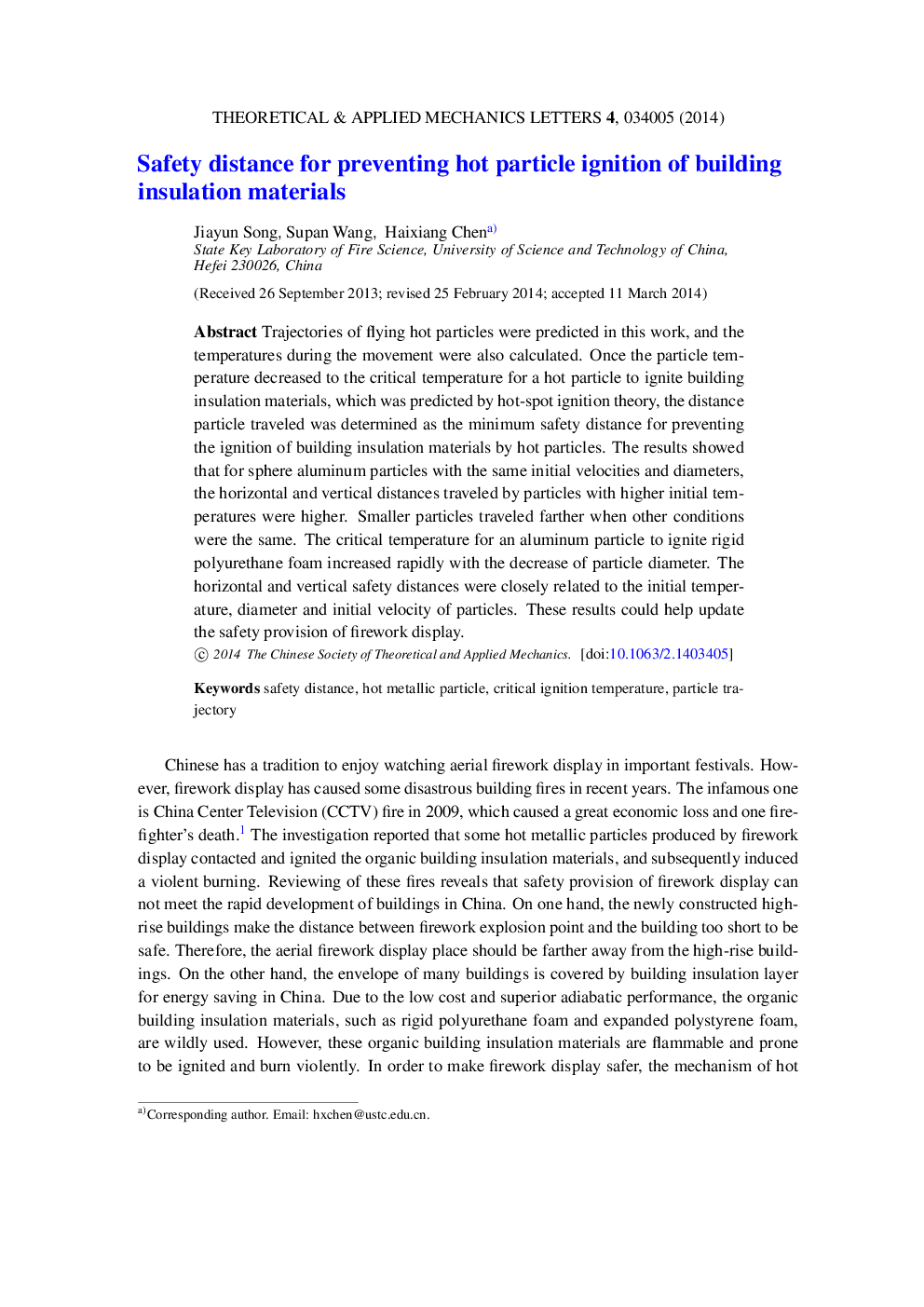| Article ID | Journal | Published Year | Pages | File Type |
|---|---|---|---|---|
| 808268 | Theoretical and Applied Mechanics Letters | 2014 | 31992 Pages |
Trajectories of flying hot particles were predicted in this work, and the temperatures during the movement were also calculated. Once the particle temperature decreased to the critical temperature for a hot particle to ignite building insulation materials, which was predicted by hot-spot ignition theory, the distance particle traveled was determined as the minimum safety distance for preventing the ignition of building insulation materials by hot particles. The results showed that for sphere aluminum particles with the same initial velocities and diameters, the horizontal and vertical distances traveled by particles with higher initial temperatures were higher. Smaller particles traveled farther when other conditions were the same. The critical temperature for an aluminum particle to ignite rigid polyurethane foam increased rapidly with the decrease of particle diameter. The horizontal and vertical safety distances were closely related to the initial temperature, diameter and initial velocity of particles. These results could help update the safety provision of firework display.
